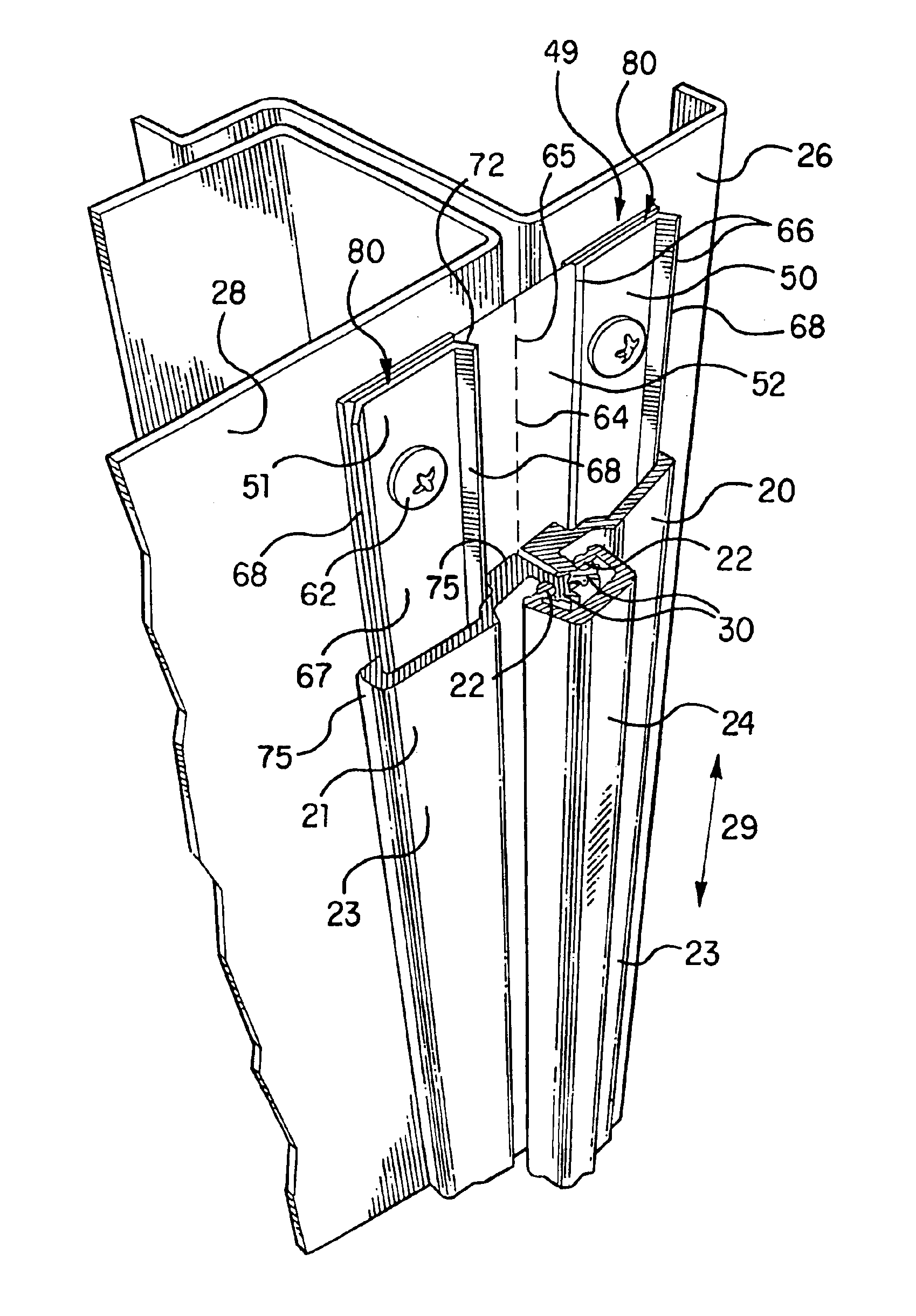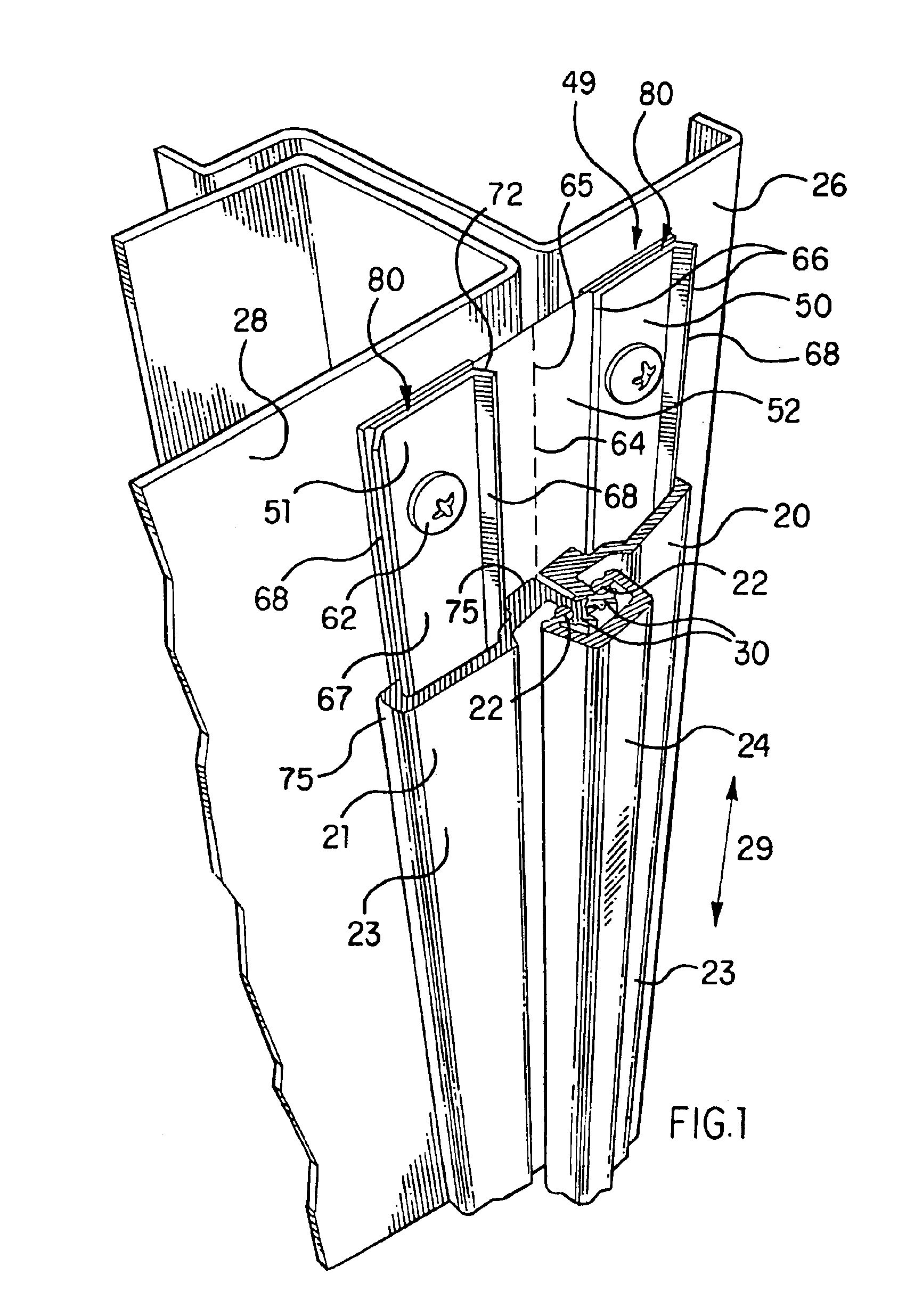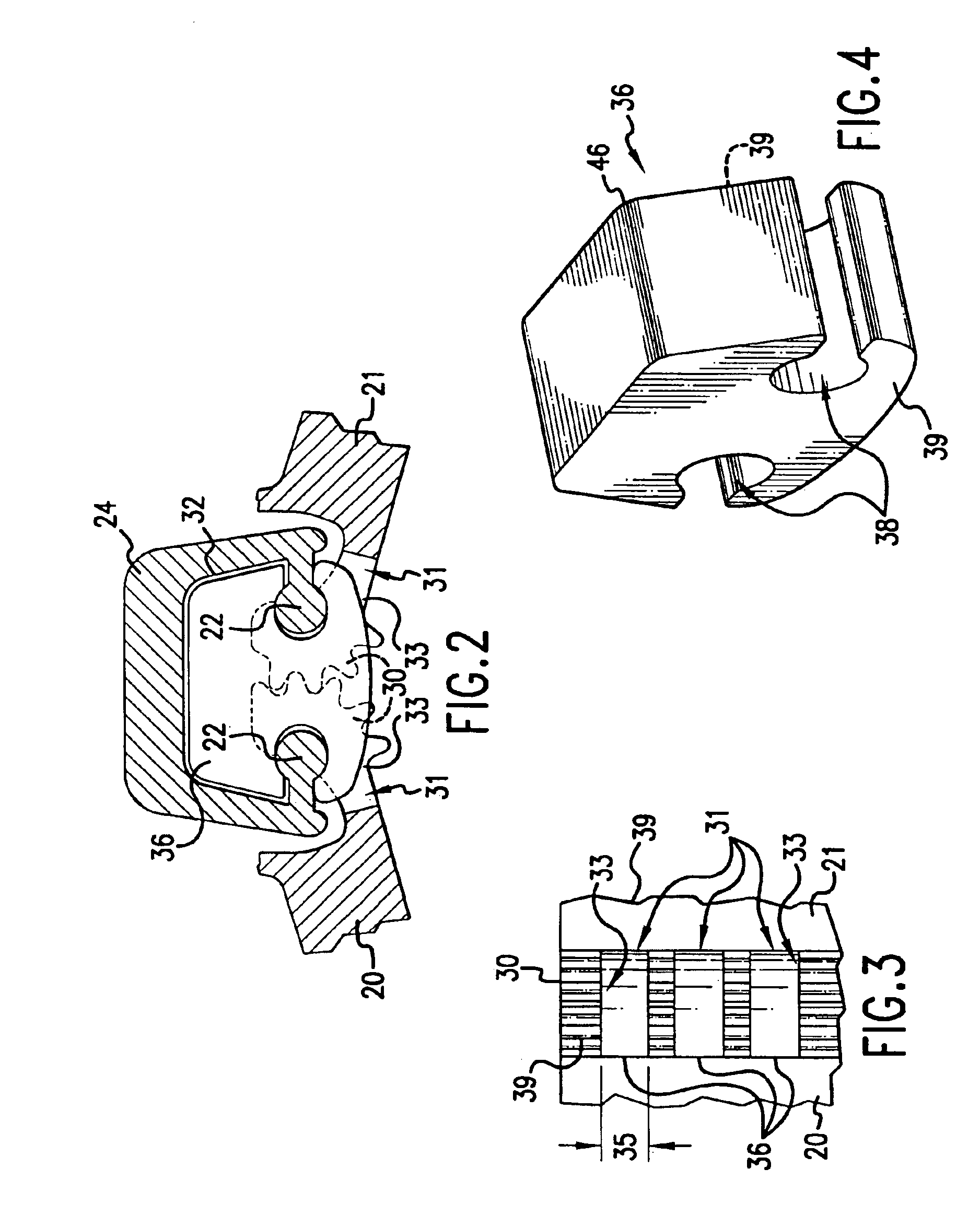Hinge mounting system
a mounting system and hinge technology, applied in the field of hinges, can solve the problems of imposing additional stress and wear on all of the door hardware, affecting often affecting the installation of hinges in the field, so as to improve the quality of door operation, facilitate the task of hinge installation, and increase the speed of installation
- Summary
- Abstract
- Description
- Claims
- Application Information
AI Technical Summary
Benefits of technology
Problems solved by technology
Method used
Image
Examples
Embodiment Construction
[0100]Referring to FIG. 1, an embodiment of a continuous pinless hinge according to the invention has two hinge members 20,21. The hinge members 20,21 are rotatably engaged to two semi-cylindrical ends 22 of a joining member, such as a clamp 24. The hinge members 20,21 are fixed to hinged objects 26 and 28, which in FIG. 1 are a door and a frame.
[0101]The edges of hinge members 20,21 comprise gear segments 30 that extend in a longitudinal direction 29 longitudinally, parallel to the length of the clamp 24. The hinge members 20,21 are pivotally mounted together, as gear segments 30 are pivotally mounted about the semi-cylindrical ends 22 of the clamp 24, which in this embodiment are at the axes of rotation of the hinge members 20,21. The clamp 24 retains the gear segments 30 in mesh and preferably provides lateral support throughout the length of the hinge. Other embodiments do not have meshed gear segments.
[0102]In cross-section, the clamp 24 has an internal preferably C-shaped chan...
PUM
| Property | Measurement | Unit |
|---|---|---|
| Length | aaaaa | aaaaa |
| Flexibility | aaaaa | aaaaa |
| Adhesivity | aaaaa | aaaaa |
Abstract
Description
Claims
Application Information
 Login to View More
Login to View More - R&D
- Intellectual Property
- Life Sciences
- Materials
- Tech Scout
- Unparalleled Data Quality
- Higher Quality Content
- 60% Fewer Hallucinations
Browse by: Latest US Patents, China's latest patents, Technical Efficacy Thesaurus, Application Domain, Technology Topic, Popular Technical Reports.
© 2025 PatSnap. All rights reserved.Legal|Privacy policy|Modern Slavery Act Transparency Statement|Sitemap|About US| Contact US: help@patsnap.com



